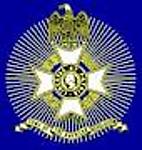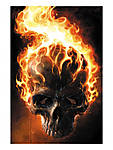
For a little variety while recuperating from that flu bug, I also spent some time working on the transmission. There are these vent openings on part C16 (right) that have a fair job of simulating the look of the perforated metal of the real thing, but I thought I'd drill them out like Steven did on his II-C.
I started with a drill bit that was smaller than the diameter of the vent openings. Drilling from the outside left the rough edge on the inside of the part. I then used a tapered round file from the inside to enlarge the hole to the right diameter. This removed the rough on the inside, kept a cleaner edge on the outside, and let me see the hole growing (watching from the outside) while I worked. Slowly twisting the file, I could apply more pressure one direction or the other to make sure the hole ended up both centered and the right size. Frequently I had to clean the little plastic bits from the file or it gummed up fairly quick.
Part C48 has two oblong openings in it that I can find in photos of the real thing. The Dragon part doesn't have these openings. I drilled two closely spaced holes from the outside with my pin-vise drill. After that I used an x-acto knife to cut through the small "bridge" between the two holes. Then I just worked at it until I had straight edges between the two holes. The last thing I did was cut a thin strip of sand paper, fold it over, and slide it back-n-forth in the straight part of the oblong to smooth out the x-acto knife cut marks. I've still got some more to do to finish getting the edges smoother, but I think it's taking shape pretty good.
One thing I'm not sure of though. I can't tell if the oblong openings have a perforated metal sheet in them, or a solid plate with a bolt (access plate, maybe?) One internet photo I've collected looks like it's a solid plate with a bolt. Another looks like maybe it is a perforated sheet. Could this be one of those II-C vs II-F differences for which I've been trying to watch?












































